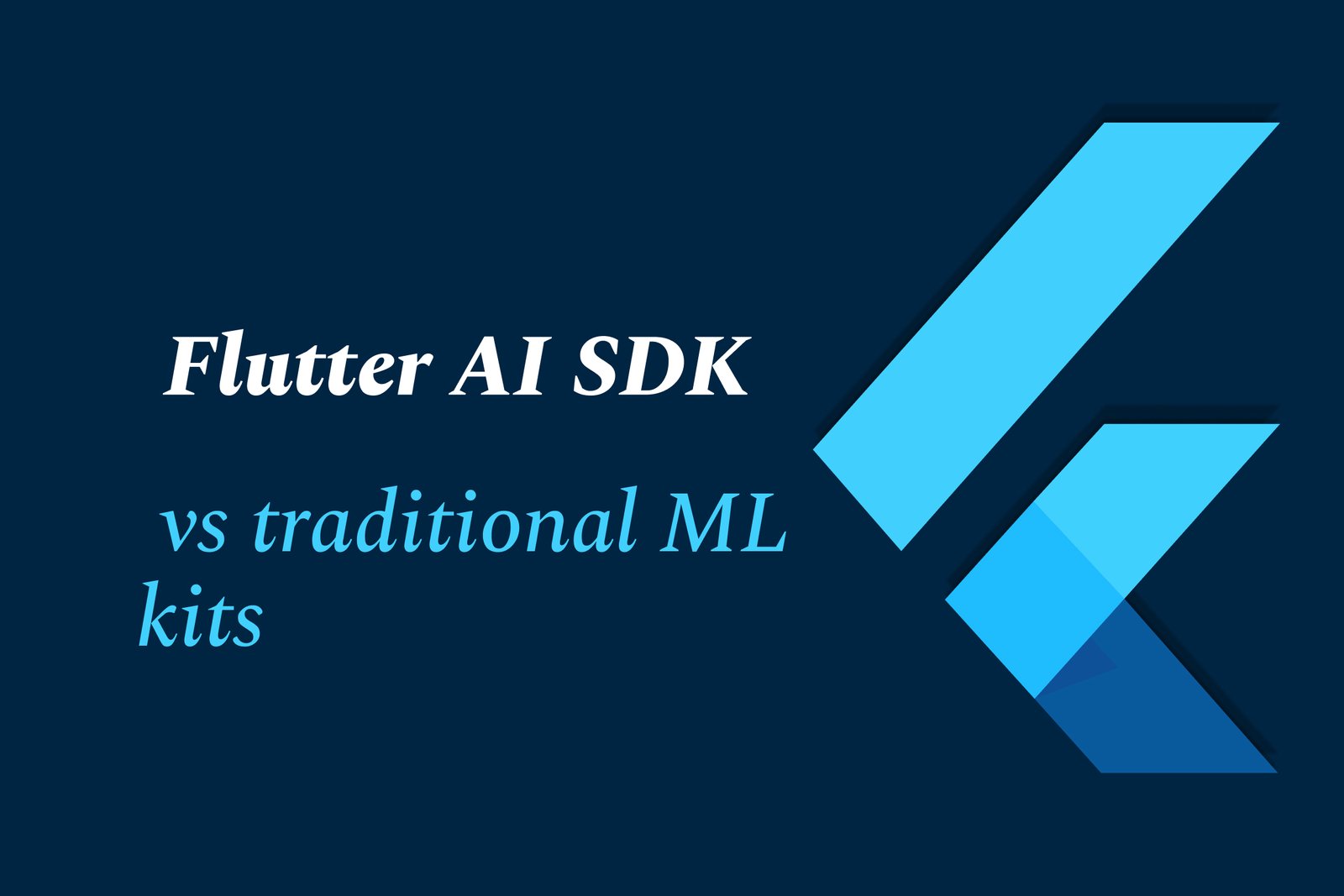Flutter AI SDK vs Traditional ML Kits
Flutter AI SDK offers customizable, seamless AI integration directly within Flutter apps for cross-platform use, while traditional ML kits provide ready-made, platform-specific machine learning features with less customization, often requiring native code bridges for Flutter compatibility.
Flutter AI SDK vs Traditional ML Kits
1 ) Overview
Flutter AI SDK and traditional ML kits serve the purpose of integrating machine learning and AI functionalities into applications. Flutter AI SDK is tailored to work seamlessly within the Flutter ecosystem, enabling developers to build AI powered features directly in Flutter apps. Traditional ML kits, such as Google ML Kit or Firebase ML, offer machine learning capabilities across various platforms and are generally more established.
2 ) Customization and Integration
Flutter AI SDK: Provides a more customizable environment for AI feature integration in Flutter apps. It supports building tailored solutions, such as customizable edge detection or OCR, that run natively within the app via Flutter's MethodChannels.
Traditional ML Kits: Often come with prebuilt components with limited customization options. They typically run on native Android or iOS layers and require bridging to Flutter, sometimes limiting customization flexibility.
3 ) Platform Compatibility
Flutter AI SDK: Specifically designed for Flutter, ensuring consistent experience across iOS, Android, and web platforms supported by Flutter.
Traditional ML Kits: Usually designed primarily for Android and iOS native environments, with varying degrees of Flutter support, sometimes requiring additional plugins or wrappers.
4 ) Feature Availability
Flutter AI SDK: Provides AI features that can be directly used inside the Flutter app, enabling functionalities like document scanning, OCR, and image processing with full control by the developer.
Traditional ML Kits: Offer a wide range of ready to use ML capabilities, including text recognition (OCR), face detection, barcode scanning, and others, but with less scope for deep customization.
5 ) Performance
Flutter AI SDK: Since it runs directly within the Flutter framework, it may benefit from more optimized cross platform performance and better control over AI feature execution.
Traditional ML Kits: Depending on implementation, may introduce some overhead due to platform channel communication or running on native SDKs; however, they benefit from mature, optimized native implementations.
6 ) Use Cases
Flutter AI SDK: Preferred when needing customized AI features tightly integrated into Flutter apps, such as tailor made document edge detection or custom OCR workflows.
Traditional ML Kits: Well suited for developers looking for quick integration of common ML features without the need for extensive customization.
7 ) Community and Support
Flutter AI SDK: Emerging with growing community support focused on Flutter developers aiming for AI integration.
Traditional ML Kits: Backed by large companies (e.g., Google) with extensive documentation, support, and real world adoption but may lag in Flutter specific customization.
Summary
Choosing between Flutter AI SDK and traditional ML kits depends on project needs. If deep customization and seamless Flutter integration are paramount, Flutter AI SDK is advantageous. For quicker deployment of standard ML features and broader platform support, traditional ML kits remain a solid choice.
https://justacademy.in/news-detail/flutter-and-tensorflow-lite-examples
https://justacademy.in/news-detail/google-i/o-2025-highlights:-flutter-takes-the-lead
https://justacademy.in/news-detail/flutter-sdk-updates-in-july-2025
https://justacademy.in/news-detail/flutter-lts-release:-what-it-means
https://justacademy.in/news-detail/handling-user-input-in-flutter
Related Posts
In 2025, top Angular libraries offer modern, feature-rich components and tools for building dynamic web apps. From powerful data grids to low-code platforms like UI Bakery, these libraries enhance development speed, UI design, and scalability, making them essential for Angular developers.
Migrating from AngularJS to Angular 17 involves gradually upgrading your app by running both frameworks together using tools like ngUpgrade, rewriting components in TypeScript, and adopting Angular’s modern architecture to enhance performance, maintainability, and long-term support.
Angular state management tools help organize and handle app data efficiently, improving scalability and maintainability. Popular options include NgRx for robust, RxJS-based patterns, and newer Signal Store solutions that offer simpler, reactive approaches integrated tightly with Angular’s latest features.
RxJS in Angular empowers developers to manage asynchronous data streams with powerful operators like `forkJoin`, `combineLatest`, and `zip`. Mastering these key operators in 2025 is essential for building efficient, reactive applications that handle complex event sequences seamlessly.
Angular performance optimization in 2025 focuses on improving app speed and responsiveness by using techniques like OnPush change detection, lazy loading, efficient data caching, and AOT compilation. These practices reduce load times, enhance user experience, and ensure scalable, fast Angular applications.
In 2025, Angular remains preferred for large-scale, enterprise apps with its robust, all-in-one framework, while Vue attracts developers seeking simplicity and fast development for smaller projects. Both frameworks excel, with choice driven by project needs and team expertise.
Angular Signals are a new reactive primitive in Angular 16 that enable fine-grained, efficient change detection by automatically tracking dependencies and updating only affected parts of the UI. They simplify state management and boost app performance, revolutionizing Angular's reactivity model.
Angular interview questions to prepare in 2025 focus on core concepts like components, directives, data binding, routing, and dependency injection, along with TypeScript mastery and latest Angular features to ensure strong practical knowledge for building scalable, efficient web applications.
AngularJS reached its official end of support in January 2022, meaning no further updates or security patches. To ensure app security and performance, developers should consider migrating to modern Angular versions or seek third-party long-term support options if immediate migration isn’t possible.
The Angular Roadmap 2025 highlights upcoming features focused on improving developer experience and performance, including zoneless Angular, Signals integration, enhanced Forms, async data handling, improved HMR, and expanded Angular Material/CDK enhancements, driving modern, efficient web app development.










